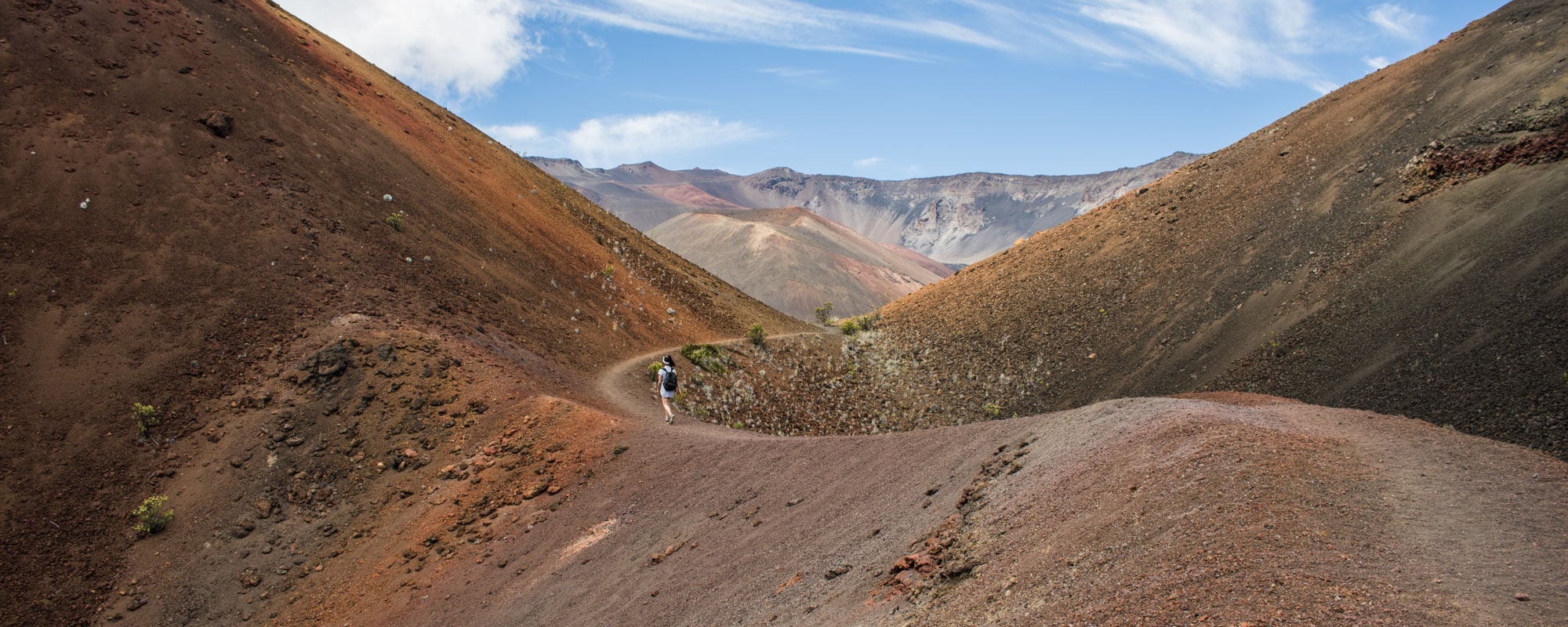Encompassing much of the east side of Maui, Haleakalā National Park protects high-elevation volcanic landscapes, as well as tropical rain forests, waterfalls, coastline and native Hawaiian fauna and flora.
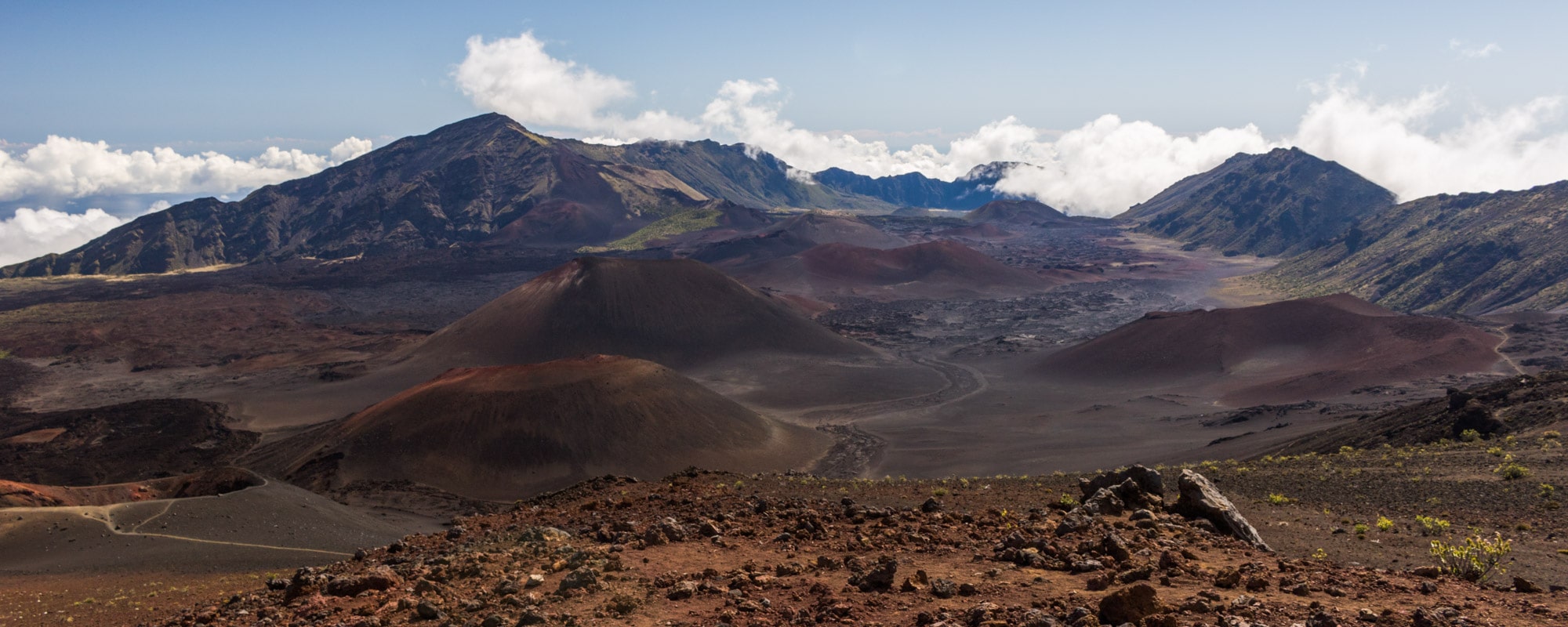
Rising 10,023 feet above sea level, Haleakalā is the world’s largest dormant volcano, the centerpiece of Maui’s Haleakalā National Park.
This is a shield volcano, created by the gradual addition of countless layers of lava, the largest part of which actually lies under the water’s surface. In fact, when measured from the ocean floor to its summit, Haleakalā is the third-highest mountain on Earth.
There are many things that distinguish this park from all other U.S. national parks. Its enormous size is obviously one of them, but are numerous other Haleakalā National Park attractions, too.
Popular things to do at Haleakalā National Park range from sunrise watching to stargazing to bird viewing. Camping, hiking and swimming are popular activities as well.
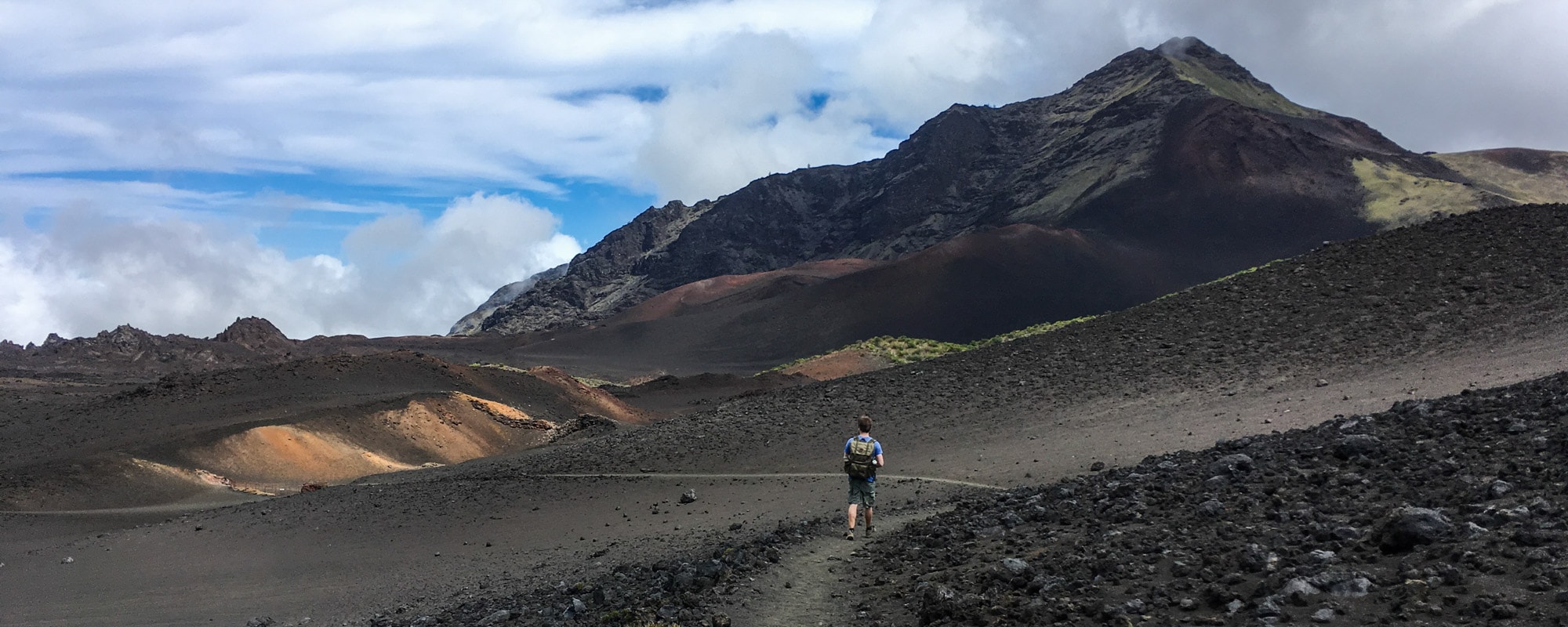
This Haleakala National Park information page contains affiliate links. You can read more about our Terms of Use / Disclosure here.
Highlights of Haleakalā National Park
Haleakalā National Park consists of two entirely different districts. The Summit District is its most visited area, particularly due to the ever-growing popularity of watching the sunrise at the Haleakalā crater.
This is where you can do phenomenal Haleakalā crater hikes and enjoy spectacular views.
The Kīpahulu District, on the other hand, lies at the ocean on the mountain’s lower east side. Accessible only via the seemingly never-ending Road to Hana, this area couldn’t possibly be more different from the summit.
Featuring lush rain forest scenery, waterfalls and natural pools, it’s a great place for short walks and swimming.
Note, though, that I really recommend visiting both areas of the park. They complement each other wonderfully and provide the ultimate, authentic Hawaii experience—a volcano and highlands combined with rain forest and coast.
Haleakalā Summit Highlights
- Haleakalā Summit sunrise / sunset
- Stargazing at the Haleakalā Observatory
- Hiking the Sliding Sands Trail (Keonehe’ehe’e Trail)
- Pele’s Paint Pot
- Seeing nēnē (Hawaiian geese) or other native birds
- Camping at Hosmer Grove Campground
Kīpahulu Highlights
- Bamboo forest and waterfall on the Pipiwai Trail
- See the Seven Sacred Pools at ‘Ohe’o Gulch
- Coastal views on the Kahakai Trail
- Camping at Kīpahulu Campground
- Road to Hana
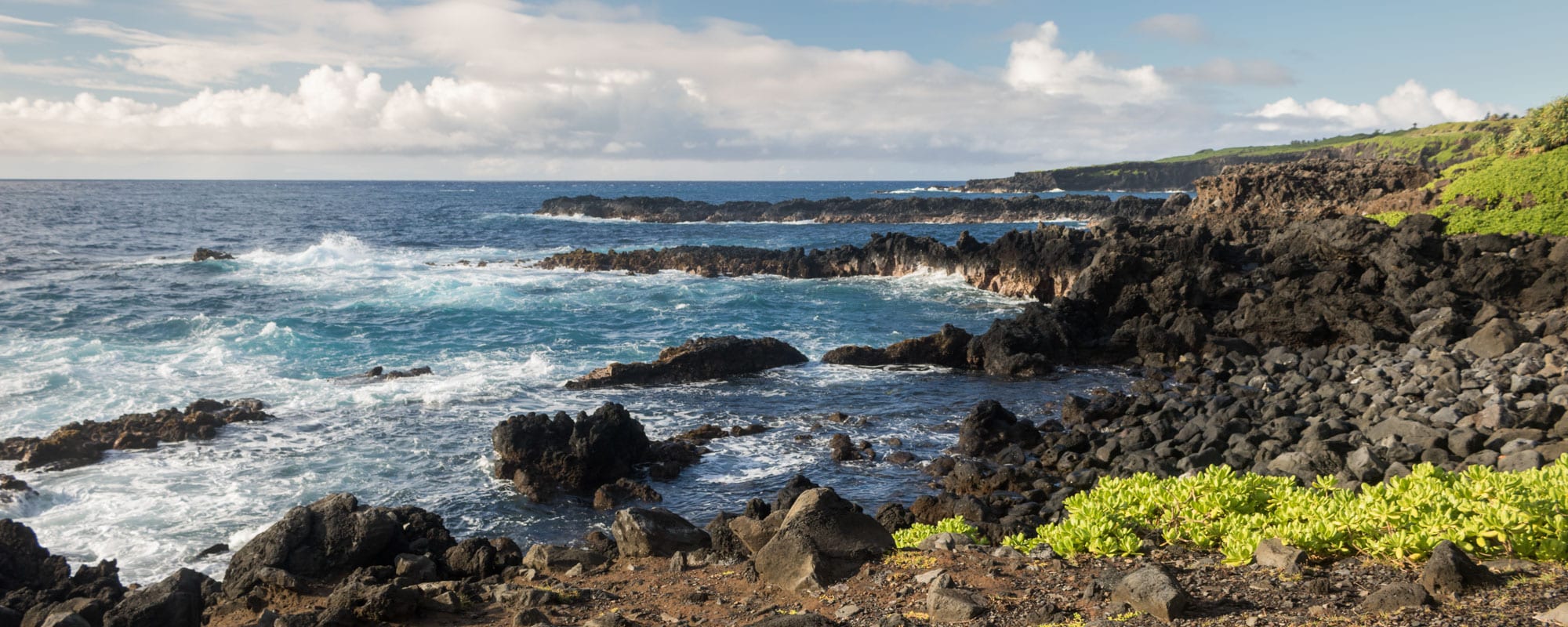
Accommodation Near Haleakalā National Park
Besides two drive-up campgrounds and a few wilderness campgrounds, there is no accommodation within Haleakalā National Park. You will, however, find several accommodation options in Hana and other towns around Maui.
Booking.com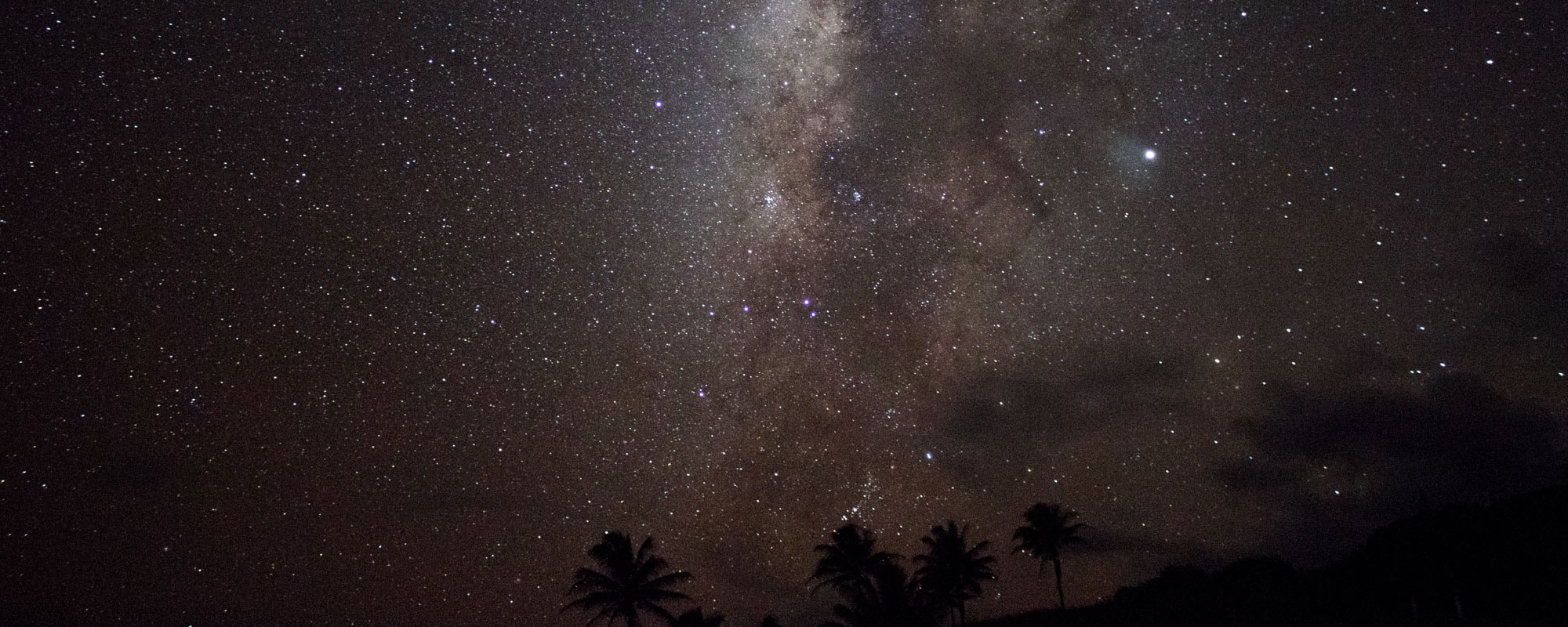
Useful Info
Location: Eastern Maui, Hawaii
Nearest Towns: Kahului and Hana
Area: 52 square miles (33,265 acres)
Annual Visitors (2022): 1,087,616
Features: Dormant volcano, cinder cones, endemic plants and wildlife, tropical rain forests, waterfalls
Top Attractions: Haleakalā Crater, Hosmer Grove, Sliding Sands Trail, Falls of Makahiku, The Pools at ‘Ohe’o Gulch
Popular Activities: Hiking, stargazing, camping, wildlife viewing, swimming
Suggested Stay: 3 days / 2 nights
Campgrounds:
- Hosmer Grove Campground (Summit District, 6 sites)
- Kīpahulu Campground (Kīpahulu District, 20 sites)
More Information: National Park Service
Nearby National Parks:
Other Volcanic National Parks:
- Lassen Volcanic National Park, California
- Mount Rainier National Park, Washington
- Crater Lake National Park, Oregon
- Yellowstone National Park, Wyoming, Montana and Idaho
